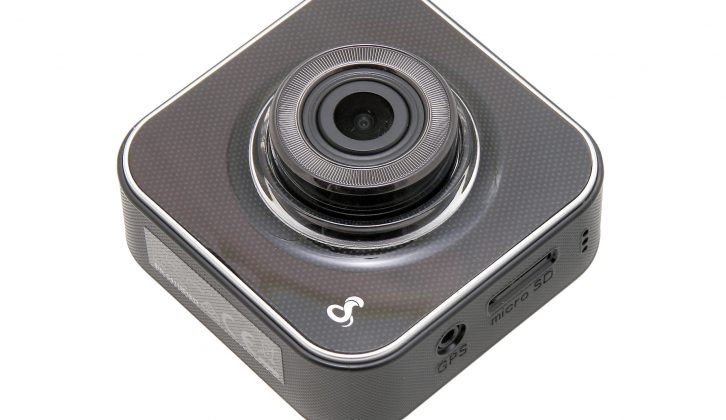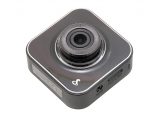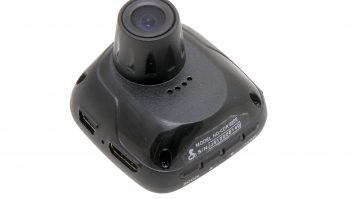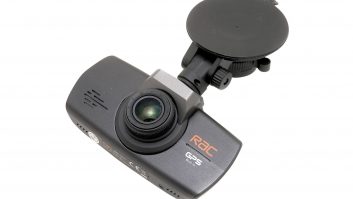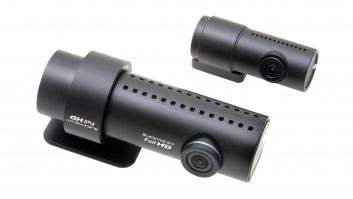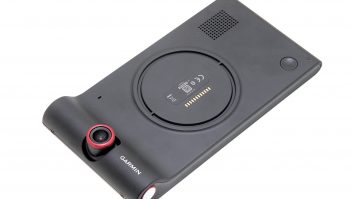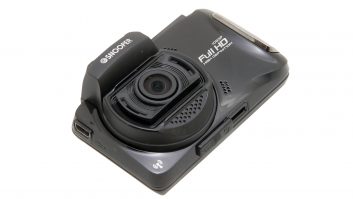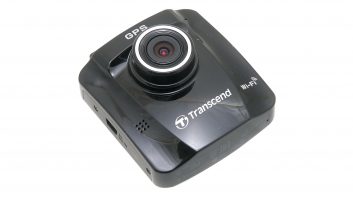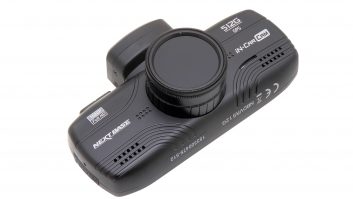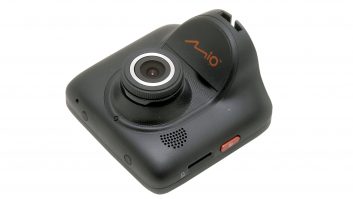Verdict
The Cobra Drive HD CDR900 dashcam costs a relatively modest £139.99 and will record a good enough image to get you off the hook if you’re involved in an accident that isn’t your fault. We’d like it even more if it had a larger rear screen and GPS. We’ve awarded it a four-star rating.
Pros
Very wide angle lens
Clear image quality
You can hook it up to a larger screen
Cons
No GPS
Tiny screen on the back of the device
You still need a lead to play footage on your smart TV or computer
Some people bemoan the increased popularity of dashcams, believing that they are a sign of a surveillance culture gone mad. Yet there are many very good reasons why having Big Brother – or, more accurately, tiny little brother – monitoring your driving is well worth considering.
The simple fact is that many knock-for-knock insurance settlements are classed as ‘both drivers at fault’ because there are no witnesses, and therefore no evidence to suggest whose version of events is correct. Obviously video footage of what happened can often clarify matters.
This is just one of many reasons why a growing number of car insurance companies offer discounts to drivers willing to buy and use a dashcam at all times. We understand that lesure vehicle insurers may follow suit if take-up of these devices increases. If so, then the saving made in the first year can often fund the purchase of the unit outright.
But what exactly are dashcams, and how do you use them? Well, they’re simply small video and sound recorders that are attached to your windscreen, and that spring into life as soon as they feel the vehicle moving. They record continuously until they register that their power supply (which is usually from the cigarette lighter socket) has been cut – such as when the ignition has been switched off – or that the vehicle has been stationary for a set period of time.
Because the device records throughout the time that you’re driving, it’s bound to capture any accident as it happens.
However, they only have a finite amount of on-board storage memory (usually in the form of an SD card), so all dashcams use ‘loop’ recording.
Once the memory card is full the camera automatically records over the oldest files. To prevent accident footage being overwritten, practically all models now have a shock sensor to sense accidents as they happen. Footage around the time of the accident is then automatically protected, and won’t be overwritten. You can retrieve footage by either plugging the dashcam into a computer or putting the card into a card reader.
To find out which are the best dashcams available in the UK for motorhomes, we’ve tested the Cobra Drive HD CDR900, costing £139.99, the Mio MiVue 538 Deluxe, costing £124.99, and the RAC 05, which costs £149.99. There are some big names getting into dashcams, and we’ve also tested the Snooper DVR-4HD, at £149.99 and the Garmin Dashcam 20, which costs £129, the Cobra CDR 820, at just £64.99, the Next Base IN-Car Cam 521G, at £179.99, the Transcend DrivePro 220, costing 129.99, and the Blackvue DR650GW-2CH at £289.99. As with all our motorhome accessory reviews, we’ve particularly looked for quality of manufacture, ease of use, robustness and value for money, as well as price.
Here’s our test verdict on the Cobra Drive HD CDR900 dashcam.
It’s hard to believe that such a tiny gadget can produce snippets of footage in extremely high-resolution Super HD. Not that this is apparent from the restrictive 40mm screen on the back. Fortunately, though, the unit hooks up to larger screens via its HDMI output (though you will need to buy a lead), and there’s even a Wi-Fi option allowing you to view proceedings on most smartphones.
At this price level, it’s disappointing that there’s no GPS; but with the gold-standard, Ambarella processing chip, and an ultra wide-angle lens, it feels as though excellent optics were Cobra’s main priority here.
Excellent optics were Cobra’s main priority here
Technical Specifications
| Memory card | 8GB |
| Cloud Mode | View in real time from Smartphone |
| Ambarella™ A7LA chipset | High resolution picture quality even at night |
| Video quality | 1296P Super HD or 1080P HD video |
| G-Sensor | Detects sudden movements |
| Automatically captures any accidents | Also protects that footage |
| Suction cup mount | Heavy duty |
| Power | Cigarette lighter adapter |
| Micro USB Cables | 1 foot power/data & 12 foot power only |
| Tripod Connector | Lanyard and lanyard mount |
| Wi-fi enabled | Communicates with the Drive HD companion app for iOS or Android devices |
| 160° viewing angle | Captures the whole road |
| Screen | 2-inch LCD screen |
| Micro HDMI output | Play footage on your HD TV or computer |
